Oh, hi! This is Easter holiday, a celebration of natural cycles, so I wrote about one of my favorite educational activities. I have been using it in many training programs over the past few years, and it always had a great impact on participants and leaders, regardless of their age and background.
It’s called “The Earth Walk”. It’s based on storytelling, it tackles environmental education, it’s great for individual work and even better for groups. This will be a step-to-step guide (very fitting, since it’s a walk) on how to use it, if you want.
First, a few special mentions. This is by no means my personal invention. It was first passed to me by two wonderful teachers, Yvan Rytz and Sebastian Eslea Burch. Two dedicated scholars, students and teachers with an authentic passion for understanding and nurturing life on Earth (and beyond) in all its forms. Big shout out, guys!
As far as I know, “the walk” has been developed in the educational practice of the Schumacher College in the UK – a fabulous place of learning that I still haven’t had the chance to visit. Yet.
What I will share here is my own adaptation, combining different sources, refined over the years thanks to the feedback received.
One note on science. What I collected here is more or less the current scientific knowledge on these subjects. Some things are pretty recent, some are still in debate, some will certainly change. Science does not claim to have all the answers (if it did, there would be no need for science), and certainly I don’t. Also: if you find a mistake or have a correction to make, please feel free to do so in the comments! Be kind. I will edit the text and improve thanks to the feedback. We all live and learn!
One note on religion. In my experience, this activity has triggered some (mild) conflict with the worldview of people following specific creeds or religions. In all my good faith, everything that is described here can coexist peacefully with the doctrine of the religions I am aware of. Of course we are talking about exploring the mysteries of nature and the observable universe, so an open mind is required. If somebody strongly believes that the Earth was formed 5000 years ago, they will feel challenged by the facts presented here. You can tell them that each iron atom in their blood cells was formed in a supernova explosion and is actually a few billion years old, but this will not likely change much.
Ok, so ready? How does it… walk? (pun intended)
Essentially, this activity is a group walk. One person takes the role of the storyteller and guides the others. The group will follow the history of Planet Earth, from its creation to our days. To recreate its cosmic scale, it’s best if the walk takes at least two-three hours. The length I recommend here is 4.5 km, so that each step (roughly one meter) will represent one million years in real Earth time – our planet is estimated to be 4.5 billion years old.
Choose a location that can be inspiring, somehow: some natural attraction, a special geologic area, awe-inspiring landscapes. Mountain, sea, forest, swamp… any setting can be fitting and can add elements your storytelling, as long as it is “interesting”. A loop is recommended, so that you end up right where you started.
So it’s essentially a walk through space and time, or space-time. Cool, huh?
I usually start off by reading a text for inspiration. I collected and edited different sources (I will mention two: This Sacred Earth: Religion, Nature, Environment by Roger S. Gottlieb and Thinking Like a Mountain: Towards a Council of All Beings by John Seed, Joanna Macy et al.).
Click here to read my introduction, or continue.
Let us go back, way back before the birth of our planet Earth, back to the mystery of the universe coming into being. We go back 13,300 million years to a time of primordial silence… of emptiness… before the beginning of time… the very ground of all being… From this state of immense potential, an unimaginably powerful explosion takes place… energy travelling at the speed of light hurtles in all directions, creating direction, creating the universe. It is so hot in these first moments that no matter can exist, only pure energy in the form of light… thus time and space are born.
All that is now, every galaxy, star and planet, every particle existing comes into being at this great fiery birthing. Every particle which makes up you and me comes into being at this instant and has been circulating through countless forms ever since, born of this great cauldron of creativity. When we look at a candle flame or a star, we see the light of that fireball. Your metabolism burns with that very same fire now.
Within the Milky Way, our sun was born about 5 billion years ago, near the edge of this galaxy while the cosmic dust and gas spinning around it crystallized into planets. The third planet from the sun, our own earth, came into being about 4 ½ billion years ago.
The ground then was rock and crystal beneath which burned tremendous fires. Heavier matter like iron sank to the center, the lighter elements floated to the surface forming a granite crust. Continuous volcanic activity brought up a rich supply of minerals, and lifted up chains of mountains.
Then, about 4 billion years ago, when the temperature fell below the boiling point of water, it began to rain. Hot rain slowly dissolved the rocks upon which it fell and the seas became a thin salty soup containing the basic ingredients necessary for life.
Finally (probably), a bolt of lightening fertilized this molecular soup and an adventure into biology began. The first cell was born. You were there. I was there. For every cell in our bodies is descended in an unbroken chain from that event.
Through this cell, our common ancestor, we are related to every plant and animal on the earth.
We begin to walk.
After a specific distance, the narrator asks to stop, and tells a new part of the story. This gives the feeling of a great journey, in which people retrace with their steps the history of planet Earth.
I will provide for each stage my indicated “distance from start”, for a walk of 4.5 km. If your distance is different, adjust accordingly.
You can just read my text, add “color” with your own facts and information, tell jokes… keep the tone light and of course adapt it to the profile of the group.
I will also indicate under a tag like this
> Click for more info and facilitation tips
my notes and tips for facilitation. Click on each section, if you want to read more. If not, just go on. I hope this will make the post easier to read.
Also, feel free to skip some stages! If you have more time, stop more often, answer questions, etc. But if you are giving a shorter workshop, focus on the essential bits.
Possible variation: if you want to represent the creation of the entire Universe (as we currently imagine it, following the Big Bang Theory),

the walk should last 3 times longer (about 9 hours), because the universe is thought to be 13.7 bln years old. If you started at 8 in the morning, the Solar System would only form at 2 PM, and the walk would end at 5, in time for dinner. I will describe this variant as a Stage 0, completely optional.
Stage 0 (optional) – 13.5 bln years ago. Walk 6 hours before the Sun and the Solar System are formed.
The impression may be that “nothing happens” here. But so many things happened! First, it’s the birth of the Universe (according to the current theories). Stars were formed and died in several cycles, hydrogen and heavier elements had to be created in the nuclear fusion of stellar forges, and all this took place even before our Sun could be born, which happened around 4.6 bln years ago.
Click for more info and facilitation tips
You can find many inspiring stories to tell about this mysterious age, from the formation and expansion of the Universe, to the way galaxies and stars are born, theory of the black holes, Dark Matter, and more. Also, since this is when the galaxies and stars are forming, this could be the perfect opportunity for some “ice breaking” activity between your participants.
Also, here is a good chart with all the names of Eons, Eras, Periods and Epochs. If it gets too confusing for you the first time, just skip that part.
Stage 1 – 4.54 bln years ago. Distance from start: 0 (with a reference of 4.5 km walk)
Hadean Eon. The Solar System and Earth are formed, shortly after each other. The environment is extremely hostile to life as we know it. The moon is also formed soon after the Earth, probably from an asteroid collision.
Click for more
There isn’t much storytelling to do here. The Earth didn’t even have a solid crust on which to walk. If you want, you can add some facts about the creation of the solar system and the moon, but I don’t want to make it too heavy at the beginning.
Stage 2 – 4 bln years ago. Distance from start: 500 meters
Archean Eon. The Earth develops its solid crust and the fluid mantle. The early atmosphere developed mainly thanks to gases spewed by volcanoes. It included hydrogen sulfide ( H2S), methane (CH4), and 10 to 200 times more carbon dioxide (CO2) as today. These were the building blocks necessary for the development of life.
Click for more
This IS interesting because the semi-molten mantle is the reason why Earth has a magnetic field. And the magnetic field keeps the atmosphere stable on Earth. A planet without a magnetic field (like Mars) would have all its atmosphere stripped away from the solar wind, although this is still in debate.
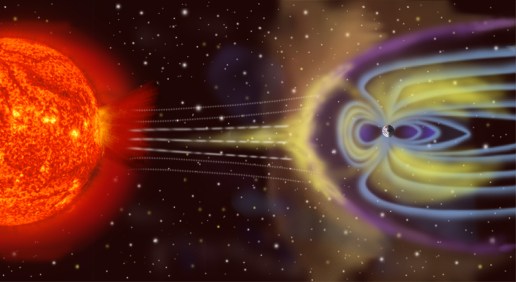
Stage 3 – 3.5 bln years ago. Distance from start: 1000 meters
The planet cools down enough for water to collect on it. Life appears on earth: chemotrophic (which produced energy from chemical reactions from sulfur and other elements), anaerobic (didn’t “breathe”), asexual bacteria. Oldest prokaryotic fossils.
Click for more
To celebrate the appearance of life, when working with youth groups I run a funny energizer or a group building game here.
This raises many interesting questions. Life appeared on Earth, basically, as soon as it was possible. And it reached everywhere: in the deepest oceans, in active volcanoes, in the darkest caves. There are even “life” forms able to survive under the arctic ice and in space. So, the question arises: if life was so easy and fast, why did it happen only here? Are we alone in the universe? That doesn’t seem likely. So maybe are we the first? Or the last?
Stage 4 – 3 bln years ago. Distance from start: 1500 meters
Earliest date for appearance of oxygenic photosynthesis. Fact: 3/4 of our oxygen is produced by sea algae – still to our day!
Click for more
One thing I remark here is that Oxygen is highly corrosive and explosive, and it was initially produced as a waste material by organisms that started using what they had as building blocks for life: combining water (H2O) and carbon dioxide (CO2) with solar energy, they would liberate breathable oxygen O2 as a byproduct. We are breathing their waste. Also important to underline is the importance of marine ecosystems for all life on Earth. Protect the oceans!
Stage 5 – 2.5 bln years ago. Distance from start: 2000 meters
Proterozoic Eon. Probable development of eukaryotic cells (with a membrane-protected nucleus). Stromatolites and cyanobacteria produce oxygen (oxygen level in the atmosphere at the time: 0.2%). No ozone layer meant no possibility for superior life.
Click for more
The nucleus was a fundamental evolution, since it collects and protects the genetic material of the cells.
The ozone layer is still extremely important because it protects the biosphere from the solar radiation, which otherwise would be deadly and make life impossible. Like, literally impossible, not “there is no parking at the shopping mall!” impossible. Ozone’s formula is O3 which means three atoms of Oxygen are necessary to form one Ozone molecule. A lot of free oxygen needed to be available, before Ozone could form a layer of some significance in the atmosphere.
Stage 6 – 2 bln years ago. Distance from start: 2500 meters
Algae, fungi and bacteria are abundant now. About 1 bln years ago sexual reproduction appeared. First Ice Age (“Snowball Earth”). Ice Ages are due to small changes in the Earth’s orbit and its axis inclination, among other things.
Click for more
The bit about sex always causes giggles. But jokes aside, sexual reproduction is important because it increases the possible variations during reproduction. This is a huge incentive for evolution. In asexual reproduction, the only chance for variation is mutation.
Ice ages are also super interesting. There have been 5 so far, and we currently are in one (!) that started 3 million years ago. We are experiencing a “warm interglacial” period right now, which is a little break that occurs during an Ice Age. This warm break started 11,000 years ago and made possible the agricultural revolution and the spread of humans all over the place. But the planet is going to cool down, like, a lot. We just don’t know when.
Stage 7 – 600 mln years ago. Distance from start: 3900 meters
As oxygen keeps building up, more and more life forms are made possible. This is called the “Cambrian explosion” of life forms (for it happened during the “Cambrian” period). Sponges, worms, jellyfish become abundant. The CO2 present in the atmosphere is used by life forms as part of their body: shelled animals appear in the oceans.
Click for more
You probably noticed that the distance between stage 6 and 7 was much longer. This is because a lot of time was needed for the levels of oxygen to build up and produce something interesting (from our point of view), so I made this period longer. I usually use this time by asking people to form pairs, and suggesting a topic – something like “is something new coming to your life?” or “How do you react to change?”. People can walk in pairs and discuss the topic.
From now on, stops will be much more frequent. A lot more life on Earth means a lot more to talk about – from our human perspective at least.
Stage 8 – 480 mln years ago. Distance from start: 4000 meters
Silurian period. First fish forms. Land plants. Hard part become more common, which leads to fossil findings in our time. Vertebrates appear. Trilobites radiate and reach their peak diversity. 450 mln years ago, the first Major Extinction happens.
Click for more
We don’t know much about this event. A “major extinction” kills at least 75% of life on Earth – spoiler alert, there have been 5 so far, and we are in the midst of the sixth. Have you ever seen a trilobite? At the peak of their diversity, they varied a lot in size and form. They looked like this:
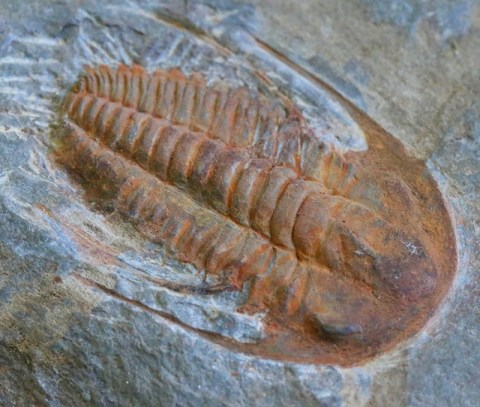
Stage 9 – 400 mln years ago. Distance from start: 4100 meters
Lower Devonian. Ferns and mosses colonize land masses. Fish become abundant in the oceans. Appearance of jawed fish, cartilaginous fish and trees.
Click for more
Why do the geological periods have these funny names? “Devonian”, because the English region of Devonshire was created roughly at that time. English and French scientists were the first to study geology and so they started to give names to things.
Stage 10 – 360 mln years ago. Distance from start: 4140 meters
Upper Devonian. Abundant reef communities. Fish dominate the oceans; sharks appear. Land is colonized by plants (including trees) and animals. Insects and amphibians appear, and the first primitive terrestrial predators appear: arachnids (380 mln y.a.). Deltas and swamps are formed.
Click for more
It’s always exciting when sharks appear (and it’s another great opportunity for some group game).
This shouldn’t overshadow the fact that life started spreading on land around this time. The appearance of trees was very important, as they could use the space very efficiently and allowed ecosystems to develop in an entirely new direction, never explored before: up.
Stage 11 – 350 mln years ago. Distance from start: 4150 meters
Carboniferous period. Reptiles appear. 350 mln years ago, the 2nd Major Extinction took place. This led to the formation of coal beds (dead forests) and oil fields (dead marine biomass): a big accumulation of CO2 and solar energy under the ground. As carbon got trapped underground, oxygen kept building up in the atmosphere.
Click for more
Since the fungi and saprophytes (organisms that feed on dead matter) were not enough at the time to deal with so much matter dying all together, a lot of it eventually got trapped underground. This, crushed and cooked by geological forces, led to the creation of the fossil fuels as we know them.
This is a great moment to talk about climate change. The fossil fuel deposits are essentially reserves of solar energy and CO2 that was stored over the course of millions of years. Human activity has been exploiting those reserves and liberating that energy in the atmosphere, for about 200 years. Millions of years to store it, two centuries to liberate it. It’s just common sense that this can somehow unbalance the very delicate equilibrium of life on Earth. For more on greenhouse effect, read here.
Stage 12 – 300 mln years ago. Distance from start: 4200 meters
The “supercontinent” Pangea is formed at this time, together with the main river systems as we know them. Deserts are formed. Conifers and winged insects appear. At the end of the Permian age, 250 mln years ago, the 3rd Major Extinction took place; and the 4th happened at the end of the Triassic, 225 mln years ago. This was a massive one-two blow to life on Earth, that wiped out 90% of life present at the time on the planet.
Click for more
From fossil and geological evidence we can guess how it happened: in present-day Siberia, and area larger than western Europe become dominated by volcanic eruptions that lasted for thousands of years. Underground coal reserves started to burn. CO2 and methane were released in the air in massive amounts. Water became oxygen-low and saturated with sulfuric acid, which eventually was liberated into the atmosphere. All this heated the Earth more and more, and the the ocean circulation stopped. Pretty quickly (60,000 years), the Earth became a burning hell.
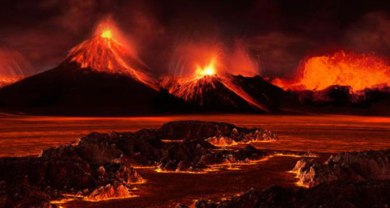
Such an apocalyptic scenario is not only science fiction. This may be what happened on Venus, which is basically Earth’s “twin planet” but presents a super hot, toxic atmosphere that makes life impossible (at least, our life). Scientists think it’s mostly due to the absence of tectonic plates on Venus.
But this doesn’t mean we are completely safe. If Earth’s atmosphere goes wildly out of control, it may reach a tipping point where it won’t recover back. This is the most negative scenario describing the consequences of a runaway greenhouse effect, as Steven Hawking warned. And yeah, that’s pretty negative.
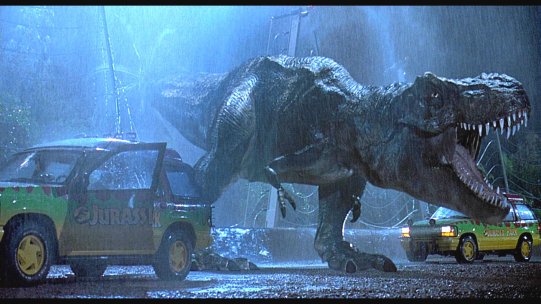
Stage 13 – 200 mln years ago. Distance from start: 4300 meters
Upper Triassic to Lower Jurassic period. As the Earth cools off and CO2 gets stored again underground thanks to reforestation and the action of the oceans, oxygen levels in the atmosphere grows, reaching 30% (the current level in our time is 21%). This marked the start of the age of reptiles, when the first dinosaurs appeared. At this time, trilobites faded away forever, after dominating the planet for 280 mln years. Their time was over.
Click for more
What heats up, eventually cools down. Volcanic eruptions add CO2 and other gases, but they have a long term cooling effect on Earth, due to the dust and ash they liberate.
More oxygen made combustion possible on larger scales, and living organisms (insects, plants, animals) could use the extra energy to grow bigger and bigger. This was a time of mega things. The term “Jurassic” comes from the Jura mountains in Switzerland, formed at that time.
And even if this may come as a shock to some, Steven Spielberg may have lied to us all this time. In fact, if dinosaurs were brought back to life today, they would really struggle to survive in our ecosystems, cope with the temperatures, breathe our atmosphere. Yes, “Jurassic Park” is a movie after all.
Stage 14 – 180 mln years ago. Distance from start: about 4320 meters
Lower Jurassic. Pangea starts to break into continents (at first two: Laurasia and Gondwana). Corals formed. Many familiar animals appeared at this time: crocodiles and turtles – in fact, actual dinosaurs who still live today – marine reptiles, early mammals, birds, crabs, frogs. Dinosaurs (from Greek: “old reptiles”) reached their peak and dominated the Earth.
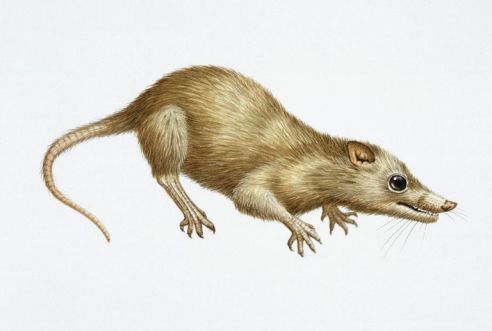
Stage 15 – 136 mln years ago. Distance from start: about 4360 meters
Lower Cretaceous. First flowering plants appeared. South America and Africa started separating. Rise of modern mountain ranges, such as the Rocky Mountains and the Andes.
Click for more
Flowers! Imagine a world without flowers. Well, that was Earth, almost all the time. Then finally angiosperms appeared. Flowers are a very smart concept, basically they are a marketing strategy for plants. They collect all the genetic material (seeds) in one nice package, and invite bugs and other animals to do the job of spreading them around. Like Amazon, but with less exploitation of workers, because bees and animals get a lot of benefits in return for their work. This really helped plants to radiate everywhere.
Stage 16 – 65 mln years ago. Distance from start: about 4435 meters
Upper Cretaceous. This is when the 5th Major Extinction happened, and since 1980 we know quite well how things went. A massive comet or asteroid (10-15 km wide) impacted the Earth, roughly in the area in Mexico where the Yucatan peninsula is. It is estimated that 75% of life on the planet died, as the consequence of this event and the chain reaction it caused. It is known as the K-Pg (or K-T) extinction event.
Click for more
The impact was devastating: it left a 180 km wide crater, and liberated such a huge quantity of dust and ash in the atmosphere that caused am unnatural, prolonged winter. This caused a catastrophic domino effect the food chain: with no sunlight, photosynthesis stopped; plants started to die, then the herbivores, then obviously the carnivores. No creature larger than 25 kilograms could survive. Which was bad news for dinosaurs. But very good news for the little, furry proto-mammals who had accumulated enough food and were able to hide in their underground holes away from desperately hungry predators. They just waited until the long winter was over.
In conclusion, extinction is not such a bad thing per se. It’s bad news if you go extinct, but it’s very good news for all those who are smart and resilient enough to survive. Imagine all the extra space, food, resources! In fact, life feeds on life and extinction is part of the bigger plan that life on Earth has been following for billions of years. New species appear all the time, some of them thrive, most of them disappear. And so on for generations and generations.
If we are able to write and read these lines today, in fact we owe it to an uninterrupted series of events that started with (maybe) one single living cell, billions of years ago. Life survived one cataclysm after another, including the K-T asteroid, the extinction of dinosaurs, and we are alive thanks to little smart, furry guys who managed to keep their head low some 65 million years ago. This is a great book about Major Extinctions.
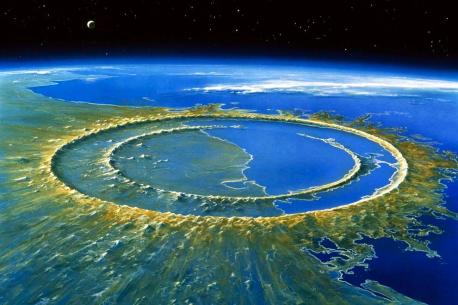
Stage 17 – 55 mln years ago. Distance from start: about 4445 meters
Small mammals radiate. Social insects. Grasses appear, and herbivores are able to spread. Without huge animals eating them out, trees thrive. Modern mammals start to evolve: advanced primates, camels, cats, wolves, horses, rodents. This was also the time of the Paleocene-Eocene Thermal Maximum: 100 thousand years in which the entire world was a tropical paradise.
Click for more
At that time, the world started to have a very familiar look to what it is today. Except there were, you know, no people around. Most of the animals we know and love were already present some 50 million years ago: this must be the reason why our ancestors worshiped them as gods. They were ooold, when we appeared.
The Paleocene-Eocene Thermal Maximum (PETM) is a very interesting story. It’s the warmest period (100,000 years) in the Cenozoic era. Apparently, the oceans near the poles had a comfortable temperature of +23° C, with no arctic ice at all. Palm trees were growing in Canada.
How was this possible? It’s still unclear. One hypothesis is that large amounts of methane were liberated in underwater “burps” (that’s right), after massive volcanic eruptions. Methane is an interesting little guy because it is – after carbon dioxide – the second most powerful greenhouse gas. It’s 84 times more effective than CO2 at trapping heat in the short term, but the good news is that it doesn’t stay long in the atmosphere (after 12 years, it breaks down to water vapor and carbon dioxide). Big amounts of methane are stored under the ocean floors and in permafrost. Should they find the way out, they will have a tremendous – and very fast – impact on the atmosphere.
Stage 18 – 5 to 1.8 mln years ago. Distance from start: about 4495 meters
Modern birds and mammals are common. The Mediterranean Sea is formed. The first ape-like ancestors of humans appear: the australopithecines.
Click for more
The Zanclean flood: is the event that generated the Mediterranean Sea. It also happened really fast! Maybe in just one year. Before it, all that lovely Greek and Italian coastline was probably just a desert basin.
Note that by now the walk is almost over: you should be able to see the destination very close now, or if you made a loop, you should be almost back to where you started. This makes sense, as the group will feel comforted by the familiar view of “civilization”.
Stage 19 – 1.8 mln years to 300,000 years ago. Distance from start: about 4498 meters
Pleistocene period. Oldest known remains of modern human beings. Human species appear.
Click for more on Homo Sapiens
Everybody knows we belong to the Homo Sapiens species. But other human species exixted, like the Homo Erectus and the Neanderthal. They quickly disappeared: what happened to them? Homo Sapiens happened.
The Neanderthals in particular lived in Eurasia. They were a bit stronger and sturdier, better adapted to hunt large animals in the Ice Age. Sapiens, however, were smarter: they were better at making and using tools and had already developed trade networks. Theories differ, but most likely the Neanderthals became extinct after a short coexistence with the Sapiens (“short” in geological terms: probably 5-10 thousand years).
Was it genocide? Probably. Sapiens were (are?) pretty ruthless. And that’s the most likely outcome when one species meets a more advanced one and they both try to live in the same ecological niche. Apparently, not all the Neanderthals were killed, however. Some 4% of the present day non-African genomes can derive from Neanderthals (in other words, some Neanderthal DNA is present in us, or maybe in your neighbor), which means that some of them were probably just assimilated.
The time scale gets really fast from now on:
200,000 years ago, the oldest Homo Sapiens fossil known to us
ca 100-80,000 y.a., Sapiens migrate from Africa for the first time (most likely, because of climate change)
50,000 y.a., language spreads
40,000 y.a.: Neanderthals disappear from Europe.
Stage 20 – 13,000 years ago. Distance from start: about 4499 meters (few centimeters remaining)
The most recent Ice Age pauses. Agricultural revolution starts (9,000 years ago). Domestic plants and animals appear and start to spread.
Click for more
There is much to say about the Agricultural revolution. As climate improved, people who were living in the more fertile areas decided to give up with their nomadic lifestyle and well, settle. They started to domesticate plants and animals that better suited their needs (artificial selection, as opposed to natural selection). They built cities and defensive structures, as their societies stratified. Large number of people needed to work harder, in order to support ruling classes of nobles, clergy, philosophers and scholars.
All of this is what we call “progress”. But is it, really?
Stage 21 – 6,000 years ago. Distance from start: about 4500 meters. 6 millimeters left
Recorded human history begins in Egypt and Mesopotamia (which accounted at the time for 3% of all human life).
All the next stages happen in a few millimeters. That’s precisely the point.
Stage 22 – 2,000 years ago. Distance from start: about 4500 meters. 2 millimeters left
Beginning of Modern calendar. Monotheistic religions appear.
Stage 23 – 100 years ago. Distance from start: 4500 meters. 0.1 millimeter left
The Industrial Revolution begins to drastically change societies and the environment.
Stage 24 – TODAY. Distance from start: 4500 meters. The walk is complete.
At this point, if time allows, I let the group a little comfort break and then we meet again. First, I ask people to share in small groups (maybe 3 people) their general impressions on the walk and the story, what emotions were moved, what were the main learning points.
Then, in a short plenary discussion, we hear what people want to share and address a few questions and answers. I usually end with the projection of the “Pale Blue Dot” video by Carl Sagan (check at the end of this post).
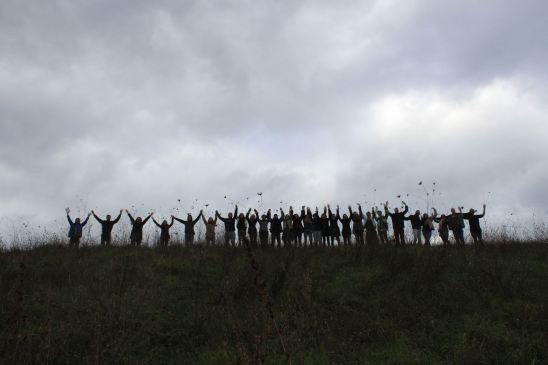
*
From our point of view it may seem that the history of the Earth is, actually, the history of Humans.
Today, 7.7 billion humans live on Earth, roughly 0.01% of the planet’s biomass. But “our activity has reduced wild marine and terrestrial mammals by six times, and the plant biomass matter by half” (source).
Humans and their livestock account for 96% of total mammals on Earth, which means that only 4% are left as wildlife. Birds are doing a little better, with 30% of them still living in the wild.
Human presence, which happened in the last 0.006% of our planetary history, has had an impact as nothing before. It’s comparable to some of the most destructive natural events ever recorded.
The 6th Major Extinction is currently underway, caused by humans, and it is estimated to be 100 to 1,000 times faster than the background extinction rate, the typical rate of extinction of all living species. Across history, wherever humans arrived, other species started to disappear. It is estimated that, since the dawn of human civilization, 83% of wild mammals, 80% of marine mammals, 50% of plants and 15% of fish have vanished. It’s a planet-wide genocide.
And now, the human influence on climate change is beginning to kick in, which could possibly jeopardize not only our own survival, but the survival of life on Earth as such – or alter it drastically for millions of years. This has been assessed beyond every reasonable doubt and is estimated to have “a 95% confidence” – which translated from scientific terms means “it’s as sure as it gets”.
The IPCC – Intergovernmental Panel on Climate Change – was established in 1988 to monitor and inform the world’s policy makers on the consequences of climate change. It gathers scientists from 195 countries. It’s been around for a long time. We have seen this coming. And until now, the reactions have been insufficient.
There still are skeptics. Those who oppose the news, motivated by economic or political interests; and those who simply don’t want (or can’t) accept that our presence on Earth, with all its qualities and its wonderful achievements, is also probably the worst thing that ever happened to it.
To them: even if climate change is not generated by humans, can we deny all the violence and destruction we are doing to the planet and its habitats? Can we at least agree to overcome our differences and slow down, if we can’t stop, the destruction?
The Earth Walk tries to do this: re-establish priorities. Set some perspective. Gently, by telling a story.
The Earth story is not OUR story. There were countless other species before us, and Earth is theirs as it is ours. Life on our planet is so amazing and delicate, it rests on a set of circumstances apparently incredible. Many feel justified in calling it “divine”. We may just as well be alone in the Universe; or at least, in this portion of the cosmos. Can we risk to lose it forever?

As I write, the awareness about these issues is growing, with movements like #Fridaysforfuture and Extinction Rebellion gaining momentum. This is very good, and it’s not enough.
Individual action can mean a lot, but without decisive intervention at national and international level, it won’t address the causes of the problem. We need to radically re-think how – globally, as a species – we coexist with one another, with other life forms, and with the planet itself.
We need to redesign the processes that support our life, the way we produce, distribute and consume our food, clothing, goods, housing, entertainment, infrastructure, transport, information; and most of all, the way we produce and use energy. Massive tasks, yes. But not impossible.
If we act swiftly, maybe we won’t need to give up all our comfort and safety. But we need to negotiate part of our privileged lifestyle, which happens at the expense of other life forms and of the planet that supports us all. There has never been a higher challenge, our survival may be at stake, and maybe the Earth’s biosphere itself.
Serious damage has already been done and some may be irreversible. But the Earth has proven to be incredibly resilient, and has formidable healing abilities. Recently, the Netflix documentary “Our Planet“ has shown that the “exclusion zone” around Chernobyl, after 30 years without human presence, now is thriving with wildlife. Only thirty years. Let’s give nature a chance and it may bounce back.
Will we make it?
In my moments of despair I look for inspiration. Speaking about science and environment, it often comes from Carl Sagan. One of the brightest minds of last century, a great human being, and a fantastic science popularizer, his TV show “Cosmos” (1980) proved that – when quality shows were offered – there was a big interest in science among the general public.
In a famous lecture at the Cornell University (1994), Sagan delivered maybe his most famous speech, “A Pale Blue Dot”. After 20+ years I still consider it one of the most passionate and moving pleas to celebrate and preserve life on Earth, in all its forms; to live our lives humbly, and to be “kind to one another”.
“Look again at that dot. That’s here. That’s home. That’s us. On it, everyone you ever heard of…The aggregate of all our joys and sufferings, thousands of confident religions, ideologies and economic doctrines, every hunter and forager, every hero and coward, every creator and destroyer of civilizations, every king and peasant, every young couple in love, every hopeful child, every mother and father, every inventor and explorer, every teacher of morals, every corrupt politician, every superstar, every supreme leader, every saint and sinner in the history of our species, lived there on a mote of dust, suspended in a sunbeam.
The Earth is a very small stage in a vast cosmic arena. Think of the rivers of blood spilled by all those generals and emperors so that, in glory and triumph, they could become the momentary masters of a fraction of a dot. Think of the endless cruelties visited by the inhabitants of one corner of this pixel on the scarcely distinguishable inhabitants of some other corner, how frequent their misunderstandings, how eager they are to kill one another, how fervent their hatreds.
Our posturings, our imagined self-importance, the delusion that we have some privileged position in the Universe, are challenged by this point of pale light. Our planet is a lonely speck in the great enveloping cosmic dark. In our obscurity, in all this vastness, there is no hint that help will come from elsewhere to save us from ourselves.
The Earth is the only world known so far to harbor life. There is nowhere else, at least in the near future, to which our species could migrate. Visit, yes. Settle, not yet. Like it or not, for the moment the Earth is where we make our stand.
It has been said that astronomy is a humbling and character-building experience. There is perhaps no better demonstration of the folly of human conceits than this distant image of our tiny world. To me, it underscores our responsibility to deal more kindly with one another, and to preserve and cherish the pale blue dot, the only home we’ve ever known”.
— Carl Sagan, Pale Blue Dot, 1994
*
Thank you for reading! I hope you enjoyed it, and you will find it useful in your work.
Do you want to support my blog? Now you can do it, with a small donation on my Patreon page. Every little bit helps, your support means the world to me and it will give me more enthusiasm and motivation to keep doing what I am doing. Thank you!
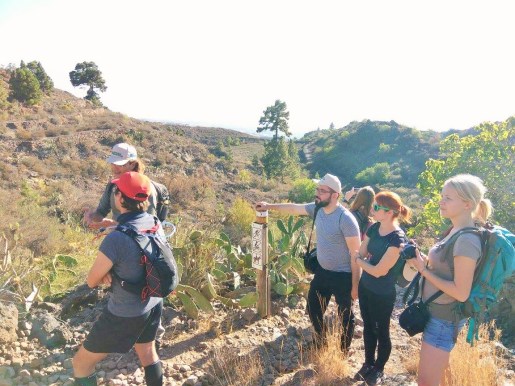
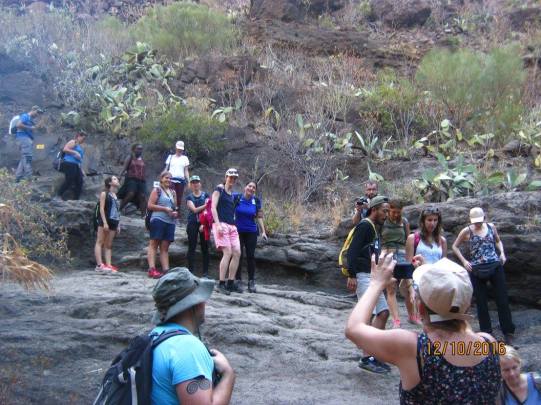
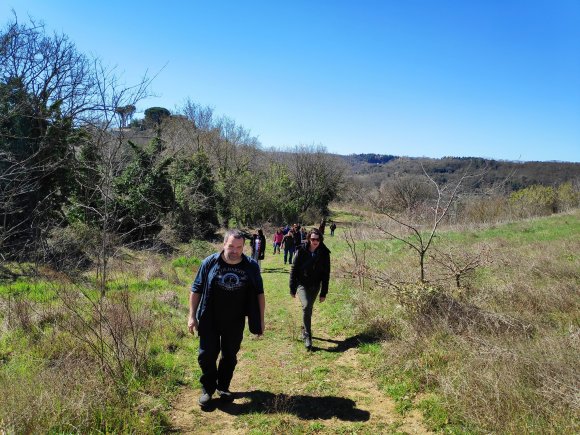

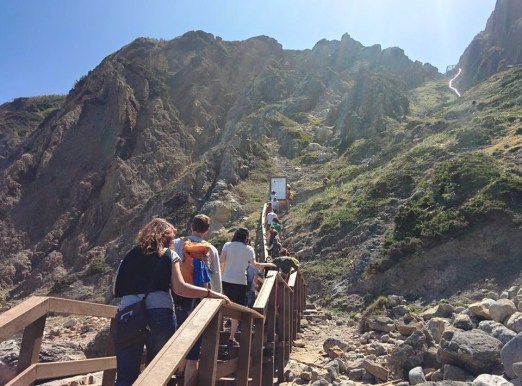

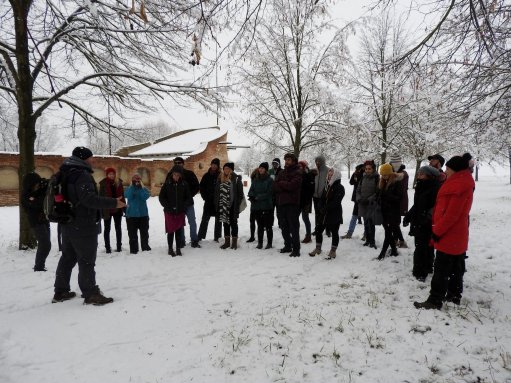
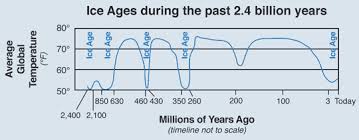



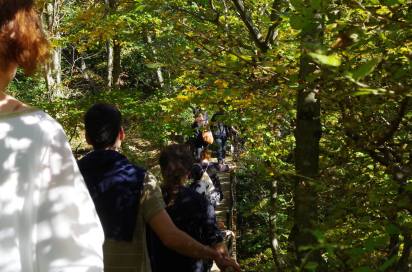

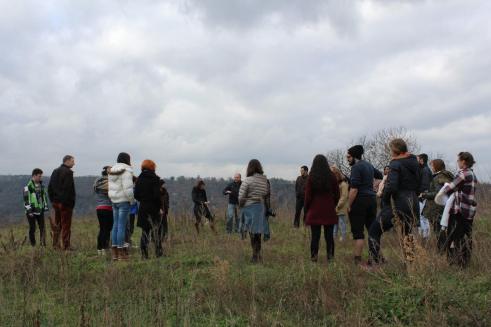
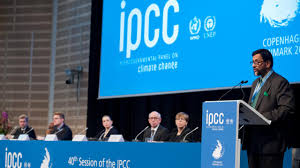
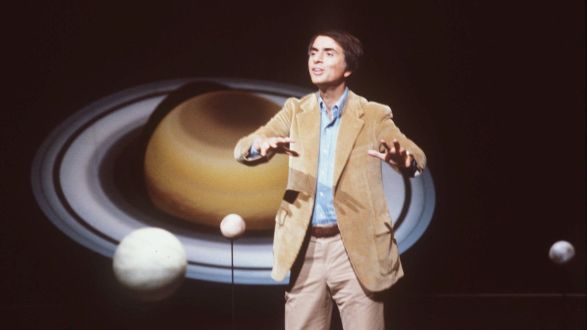
5 thoughts on “The Earth Walk – environmental education with a powerful storytelling experience”